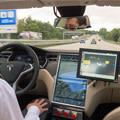Blockchain raises fundamental questions

Roula Khalaf, Editor of the FT, selects her favourite stories in this weekly newsletter.
Blockchain — which is seen by many as the next big thing in the financial service sector — has many potential uses, from transforming money to modernising the banking system to digitising legal processes. Many of these uses raise questions about a changing relationship between the individual and government, but the debate is complicated by misunderstandings about how the technology works.
Blockchain is essentially a shared public database for recording transactions in a way that does not allow the record to be altered at a later date. Before the term blockchain became popular, it was more typical to refer to bitcoin, the digital currency that is built upon blockchain technology. Bitcoin is a system of value transfer that is apparently outside of the control of the state. Early adopters of bitcoin viewed it as a way to both escape a monetary system controlled by central banks and operate anonymously beyond the prying eyes of government.
Bitcoin raised the question of whether computer code, rather than a central bank, should control the money supply. And if a digital money system enabled its users to operate beyond the law — as physical cash does — was that desirable for wider society?
The first fallacy about systems such as blockchain is to believe that they are a defence against government, rather than an enabler of it. This was described the “libertarian fallacy” in a speech at a blockchain conference in Sydney by Lawrence Lessig, a Harvard law professor who warned in the late 1990s that the internet would be an enabler of surveillance.
If a society adopts a single system of digital money, where transactions are recorded on a single database as they are with bitcoin, it is possible — even likely — that governments will successfully attempt to control it
“It’s a good method for surveillance of cash transactions, but the question is, do you want this surveillance?” says Ben Zevenbergen, a researcher at the Oxford Internet Institute.
Now much of the conversation has moved on from bitcoin and cash, to blockchain and what shared database technology might mean for the financial system. The hype and investment have moved to blockchain start-ups that promise to decrease settlement times and cut back-office bank costs.
Unlike bitcoin, which has been running since 2009, uses of blockchain in banking remain largely experimental. One vision is for a single database maintained and accessed by the biggest banks to execute and settle trades.
Simon Taylor, who leads the team looking at blockchain and distributed ledger at Barclays, says there are industry discussions about how each bank would maintain its own privacy in a shared database. There are also questions about how much access regulators should have, he adds.
“If a shared ledger has the golden source record of everything that’s happening, under what circumstances can the regulator see it? What’s the appropriate regulatory input into that system? And are they ready for that level of automation? Are they ready for a software-driven regulation?” he says.
There is a second blockchain fallacy. If digital money enables government surveillance, banks seeking to shift the cost of regulatory compliance from themselves could argue that access to a shared blockchain is all a regulator needs to supervise the banking system.
It is wrong to assume, however, that a digital database, whether for a country’s currency or for a bank’s back office, records everything. Blockchain exists in the real world that is ambiguous, messy and full of people who may wish to keep things off the database.
One of the most radical ideas for blockchain technology is the notion of digitising law. The industry jargon is “smart contracts” — code on a shared database that automatically executes a contract based on the fulfilment of certain real-world conditions, just as a vending machine obeys rules to provide sweets when money is inserted.
One aim would be to eliminate “one of the most frustrating aspects of contractual drafting: the inherent ambiguity” of language, according to a paper last year from researchers at Harvard Law School and Yeshiva University in the US.
But is it desirable, or even possible, that contracts become inescapable chains? In removing ambiguity or room for disagreement, “you’ve evacuated the very core concept of what a contract is”, says Quinn DuPont, a researcher in cryptography and society at the University of Toronto.



Comments